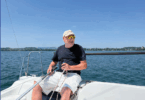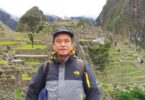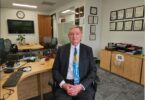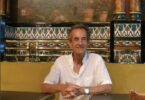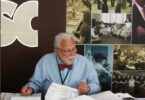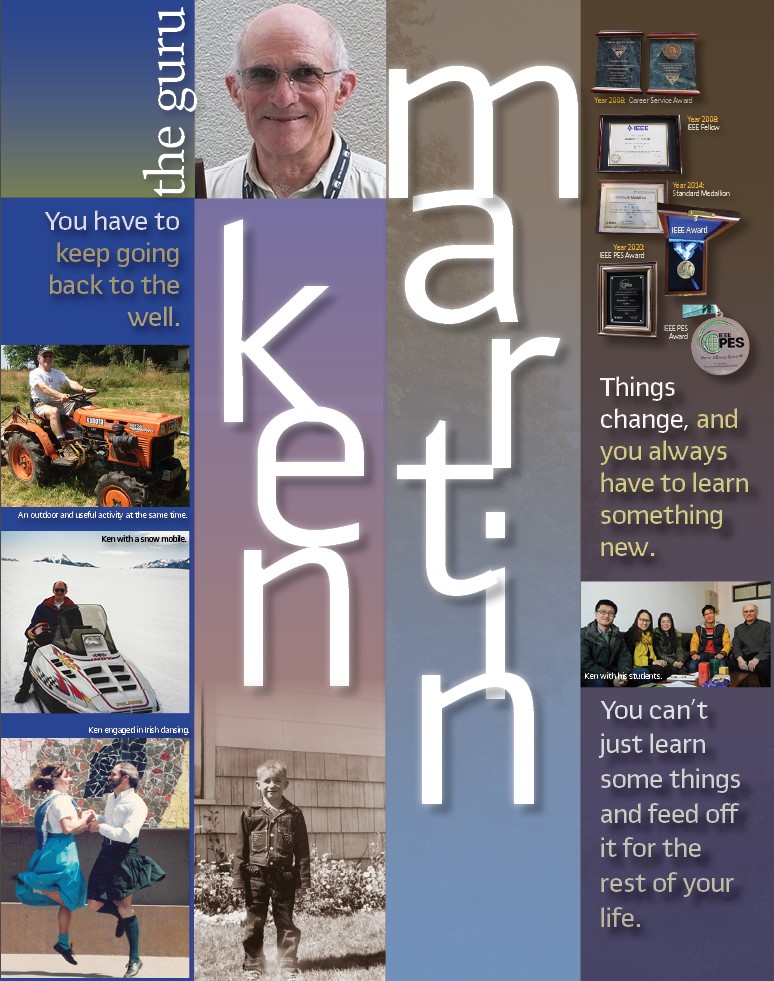
PAC World: When and where were you born?
K.M.: I was born in Colorado Springs, Colorado, USA in September 1947.
PAC World: Where did you grow up and where did you go to school?
K.M.: We moved to Durango, Colorado when I was 4, and I grew up there through age 20 which included all my schooling through the first 2 years of college. Consequently, I consider Durango my hometown.
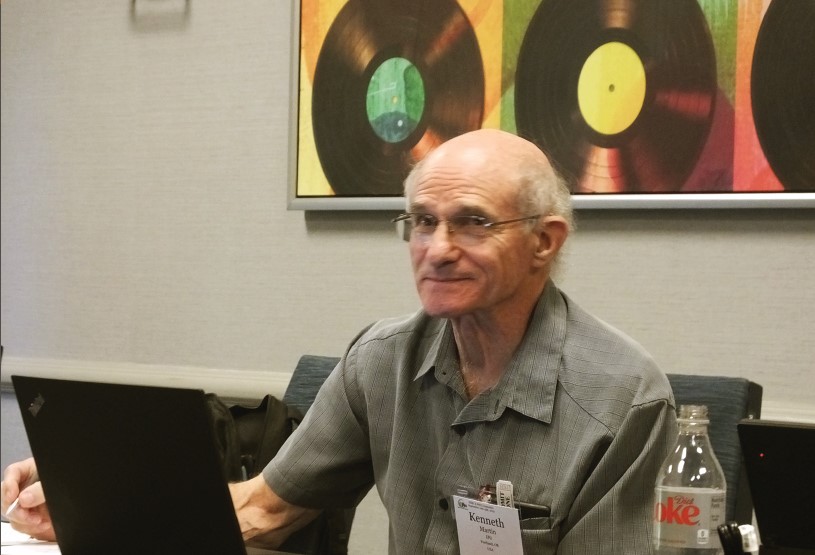
PAC World: Did you have any specific interests while in school?
K.M: I had some of the normal interests, like sports, partying, and girls. However, I was also active in Boy Scouts up through Eagle Scout and spent a summer camp counselling. I also loved building things like tree houses, simple furniture, and mechanical things like a winch for our land cruiser.
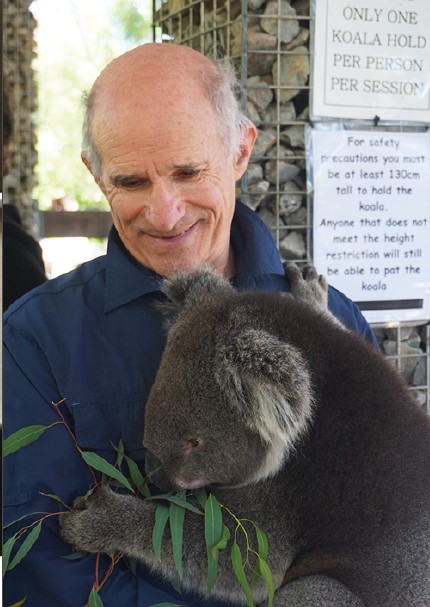
PAC World: Can you think of someone in your childhood that influenced your decision to become an engineer?
K.M.: I didn’t have a particular person I idolized or found inspiring to go into engineering. During the career counseling at the end of high school the tests indicated I could do well in engineering, and I realized that I was naturally attracted to building things. The people I admired the most were scientists, such as Albert Einstein. I really liked finding out how things worked and dissected many machines to that end. However, unlike the pure scientists, I like to do something with what I know and make something that does something, preferably something useful.
PAC World: Where did you go to university and why did you choose it?
K.M.: I did my first 2 years at Ft. Lewis College in Durango as I could live at home saving money and also got a scholarship there. Then I transferred to Colorado State University in Ft. Collins, CO. I could transfer all my credits there and I had in-state tuition which was affordable for my budget. They had a good engineering college, and it seemed like I could get a decent education there. I chose EE though I seriously considered ME. EE was the right choice as it was a rapidly expanding field with integrated circuits just getting going and the whole world was turning to electronics. I was so excited with all the things I could do with electronics.
PAC World: You served in the military and worked as a park ranger. What made you do that?
K.M.: Once I completed my BSEE, I lost my student deferment, so I was subject to the draft. In the lottery that year I got the number 8, so I was pretty well destined to go. While I disagreed with the Vietnam war, I believed that some military was necessary so if chosen, I would serve. I was drafted and ended up working as an EE in a proving ground where various weapon systems were tested. It was interesting work and gave me the opportunity to use some of what I had learned and continue my learning as well. Some of that early work was with timing systems and instrumentation which is the same area where I did much of my power engineering career.
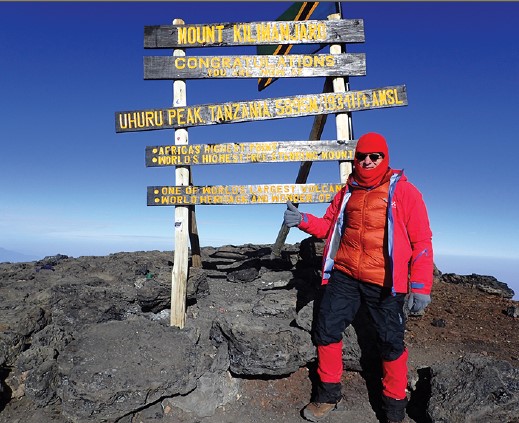
After the Army I went back to school for a master’s degree in mathematics. My wife finished her degree in outdoor recreation at the same time. She wanted a job in the park services and since I was very active in mountaineering, I agreed to follow her career for a while. We both applied for and got jobs as seasonal rangers at Mt. Rainier near Seattle. I was a climbing ranger interacting with hikers and climbers and she did nature interpretation. We did that for 2 summers there. At that point it was time to move on to more permanent positions. In my 2nd year there, I also made a recorder for radio traffic that recorded the time of day and the VHS traffic. It was very useful reviewing activity during emergency events such as accidents and rescues.
PAC World: Is there any specific reason to choose working for the Bonneville Power Administration (BPA)?
K.M: At the end of our 2nd year as summer rangers, I realized I did not want to be a ranger, and I really wanted technical challenges. I wanted a technical job where we could live in a smaller town. I applied to many industries and got a job offer from BPA. On investigation, I found they had field engineering jobs in both protection/metering and communications. As I had focused on some aspects of communication in college, that sounded like a good choice. I had to start with BPA in Portland but within a few months got an opportunity to transfer to a field position in protection & metering. After a year there I transferred to a communication group where I spent the next 5 years fixing radio equipment problems and starting a family
PAC World: What made you decide to continue your education?
K.M.: I am guessing by continue education, you mean go on to a master’s degree.
Much of EE employment at that time was involved with military development and I wanted to do something that had no such association. I decided to go into mathematics which I also enjoyed. As my Army service was winding down, my wife and I decided to go the University of Washington which has a good mathematics department for me and good outdoor recreation for her. In the course of doing my masters, I realized that pure math did not mean so much for me. I also found college teaching jobs at that level were pretty scarce in places where I wanted to live. I could have gone on for the PhD and did some investigations in both math and engineering. Ultimately, I wanted to get out and DO something useful, so ended up with 2 summers in the Park Service and then on to BPA.
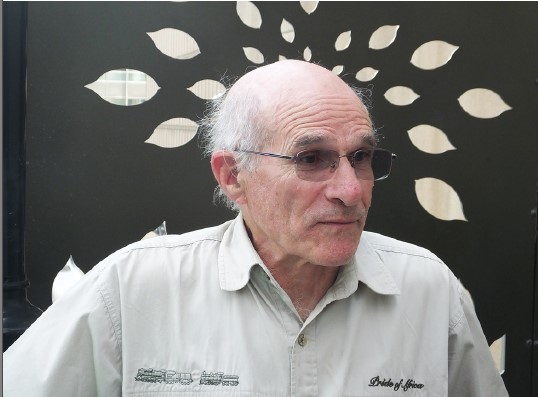
PAC World: You started working with communications and microprocessors at a time when substations were equipped with electromechanical and solid-state relays. How did that happen?
K.M.: I had not studied Electric Power in school beyond fundamentals. At BPA I was planning to get into communications. Ironically my first job was protection which proved interesting and a new challenge, learning about electromechanical elements, sticky backstops, relay coordination, and the like. However, there were already significant parts of relays that used solid state. My electronics knowledge and ability were much appreciated among older engineers who knew little about it. For example, one of my early successes was figuring out why a recloser relay sometimes timed out too early. It turned out the designer used the base-emitter junction of a transistor as a diode to prevent reverse leakage from a timing capacitor. However, that junction acts as a Zener and breaks over at about 6 v. So, when the recloser delay timing capacitor was above 6 v, the charge drained off and the time delay was reduced. We put another diode in series to resolve the problem.
Anyway, I was still doing electronic solutions with both analog and digital chips for several years before we had microprocessors that we could use in our communications work. So when I transferred to the BPA Labs I became heavily involved with microprocessor and computer run systems. By then microprocessor relays were just being accepted by industry, so I had opportunity to learn something about them through Lab testing.
PAC World: You are a pioneer in the development and implementation of synchrophasors. How did you become interested in it?
K.M.: BPA and AEP contracted with Virginia Tech in 1986 to make a phasor measurement device based on research published by Arun Phadke, Jim Thorpe, and Mark Adamiak. I took on the job of testing this device, now called a phasor measurement unit (PMU). I set up a field test with 2 units and directed analysis that included both steady state and dynamic conditions. We also made parallel analog-based measurements to confirm results. I followed that up with lab tests to check accuracy under more controlled conditions. As a result, I could see that the PMU provided much better results than comparable instrumentation we had been using. I became quite interested in the technique and encouraged more widespread and permanent deployments.
During the August 1996 blackout in WECC we captured the unstable oscillation that led to system separation with PMUs deployed for demonstration project. We could also see the phase angle spreading as the system weakened. These results showed the potential value of a more comprehensive system. I got the support to develop a phasor based WAMS including a phasor data concentrator (PDC), data storage, display, distribution, and analytics. This was steadily grown to include visibility over most of BPA’s high voltage system and critical generating resources.
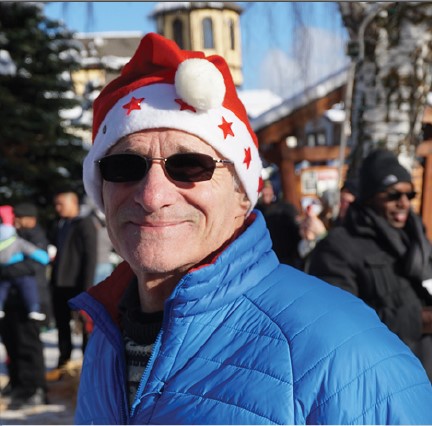
PAC World: Do you think we can use synchrophasors for protection applications?
K.M.: Yes, Phasor values are used extensively in protection and control systems. Synchrophasor measurement development has focused on accuracy with good response, which is adequate for some kinds of wide area and backup protection. There is no reason synchrophasors cannot be used for protection, but the algorithms may need to be tailored for specific protection applications.
PAC World: When and why did you join the IEEE?
K.M.: I joined IEEE in 1991 when I became a senior engineer. I did not join as a student as I was on a very tight budget and membership was a little expensive. During my first years with BPA there was little incentive to join in field positions. When I moved to the Labs, I did get involved in some research and development, so became interested in being more engineering involved. I joined when I got the senior promotion. I also became a senior member shortly thereafter as I already had the required experience.
PAC World: You have been involved in the development of both IEEE and IEC standards. What is your opinion about joint standards?
K.M: The IEEE and IEC have somewhat different approaches to standards, but both follow a rigorous process. I like the openness of the IEEE process where anyone can join the process, leaving it up to the chair to be judicious as to keeping the process manageable. However, I think the more formal membership and review stages in the IEC process may provide better quality assurance. In the joint standard process, one of which I led as both IEEE chair and IEC convener, both approaches have to be followed and they actually work together pretty well. The membership expands to include both approaches. Both require a democratic meeting process so that is fairly unchanged. The drafts have to go through the IEC review process as well as IEEE, so resolving comments is a bit tedious, but the result has thorough consideration. It also means there is one standard most everywhere, so supports the worldwide commerce we have today.
PAC World: What do you think about the IEC 61850 standard and its role in digitizing the electric power grid?
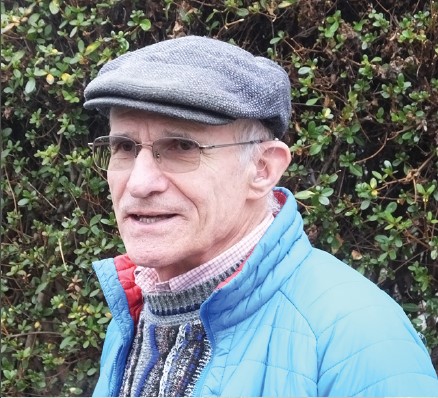
K.M.: The 61850 standard is monumental and definitely has a huge impact in the industry. In concept it is a great idea and the right thing to do. In reality it is difficult to effectively bring together so many different ideas and needs and effectively address them all with one common system. Overall, I think it has been very successful for something so big. It is difficult to master and a real challenge for the beginner. Some areas it has had profound success, such as in GOOSE messaging to replace control signal wiring. Other areas, like the modeling and meta data I’m not so sure. I think the idea of having a common messaging that covers all processes and includes the modeling is a great idea. But it is a challenge both bringing together systems that are already established and keeping up with changes, especially those brought in from other fields of activity.
PAC World: What do you think about the leap second and should we get rid of it?
K.M.: I think we should have gotten rid of the leap second years ago. When the UTC system with atomic based time was established, it was mostly navigators and various specialty activities that used time to specific fractions of seconds. Since the 1980’s the world has increasingly relied on computer technology so more and more processes are rooted in digital time. By 2000 we had so much technology on digital time we were afraid of major systems collapse at the rollover. That should have been a wakeup to the IERS to plan the change. Anyway, few will notice the change of star positions by some seconds that will occur if we don’t make any adjustment for a century or so. And those few can make the adjustment in their own calculations. But it will make a big difference for many if we skip leap seconds in our daily timekeeping.
PAC World: What has been the most challenging project you worked on?
K.M: I think developing the C37.118-2005 standard was the most challenging. There were a lot of participants that wanted to take the development in different directions, so achieving consensus was always difficult. We started the work with the original standard, IEEE 1344, but it was inadequate in many ways. We had development in WECC that was successful but specialized. But we had some very capable and creative WG members that came up with solutions for the protocols and test methods needed to make a standard that was comprehensive, implementable, and acceptable to a wide variety of users. The process took about 5 years going back and forth with discussions and proposals.
PAC World: What do you consider your greatest professional achievement?
K.M.: I think creating the phasor measurement system at BPA was my greatest achievement. I learned to harness available products and technology and bring it together with creations of my own to produce a system with lasting impact. I took advantage of commercial PMUs and used my position as the project manager soliciting new PMUs to encourage more development. I developed the PDC to serve the need of bringing the data together and serving users with the latest networking access. I organized users to develop protocols and share data. The system and methods were very successful in WECC, and I think had a big impact in the industry.
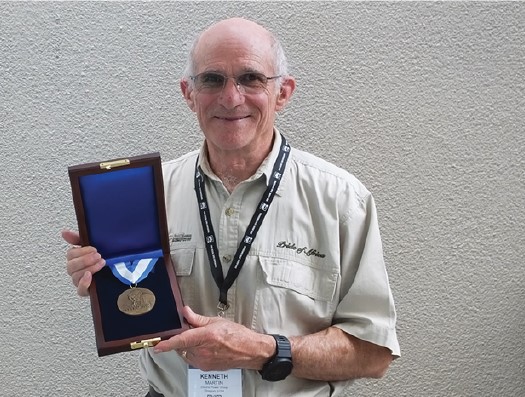
PAC World: You have received many awards and recognitions. Is there one that is more important than the rest?
K.M: I think being selected as a Fellow of the IEEE is the most important. It is widely recognized, difficult to be selected, and something that is acknowledged regularly. I have received special awards from BPA, PES, IEEE, IEEE-SA, and IEC that are also significant, and they make me field truly honored. However, they are not as regularly cited or widely recognized as being an IEEE Fellow.
PAC World: What is the best way to share your knowledge and experience?
K.M.: This probably should be answered by someone other than me. My choice has been to keep “working”, mostly as a consultant and advisor. I work with a lot of younger engineers reviewing their work and making recommendations. I also have taught at universities as a guest lecturer and technical advisor. I present at workshops and conference panels where I can share experience and perspectives as it relates to current development. Without new exploration, my perspectives become obsolete, so I try to work on some new projects too
PAC World: You have been working for more than half a century. What keeps you going?
K.M.: I like technical work where I have to study and understand new problems and come up with solutions. I think about various technical things all the time, considering how things happen and what makes the world tick. I have not stopped being curious about the world around me. So, whether you call this working or just living, the activity is about the same. The only difference is whether there is some kind of obligation to deliver or remuneration for it. Sometimes I think I would like no obligations whatsoever, but for now there are things I have obligated myself to do, such as leading a standard development. So, if it becomes” work” that is ok. Eventually I will retire completely and have no work, I just hope that does not signal that I am losing curiosity!
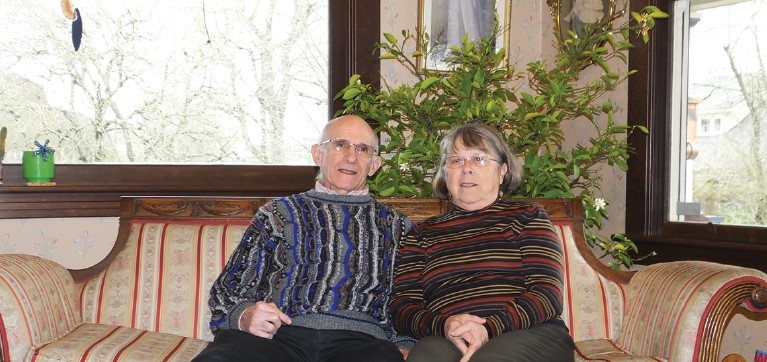
PAC World: How do you balance your active professional life with your family life?
K.M.: My early professional life was slanted to my family, so I didn’t do so much outside of the engineering employment. As my family developed into middle and high school, their interests shifted to friends and activities, and I became more involved in professional activities beyond my daily job. My wife travels with me a lot and we have been able to combine my professional activities with social and sightseeing activity. More recently we have been able to take our grandchildren on some of my professional trips. There is always the balance and sometimes I have to turn down activities for family life.
PAC World: You have been married for 31 years. What is the secret?
K.M: No secret, my wife is always right. She supports me in my activities lending encouragement and companionship. I make sure to show my appreciation and support her in the activities that she values. We minimize conflict by fulfilling the roles that are anticipated by the other. So, it is more of a 2 way street and a partnership.
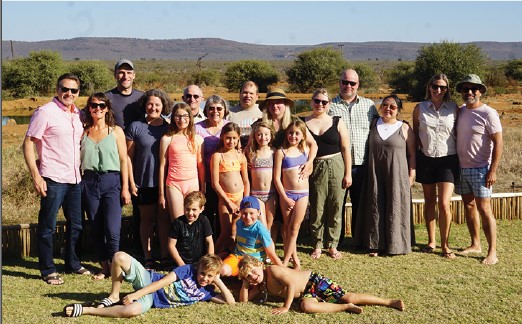
PAC World: What do you like to do when you are not working?
K.M.: I like various sports. This has changed over the years, ranging from backpacking and mountain climbing to windsurfing and tennis. The last few years I have enjoyed playing soccer. As people have begun playing sports at increasingly older ages, the opportunity has grown. I now play in an Over-65 division and hope to play in an over 75 tournament this year. We watch some professional sports, but generally I prefer to participate over watching someone else having fun. We do some hiking and bicycling and skiing, and I climbed Kilimanjaro last year. Other than sports, we enjoy sightseeing trips, going to concerts, and watching movies.
PAC World: You travel all over the world. Do you have a favorite place to visit?
K.M.: My wife and I go to Phoenix for a couple months in the winter to get away from the dark, rainy Northwest. That has become a favorite. I travel so much, I don‘t really have other favorites where I visit regularly. Though not a regular journey, I love going to high alpine mountain areas which are much the same as where I grew up in Colorado.
PAC World: Do you have a favorite food?
K.M.: I like many different kinds of food, both traditional “American” and from many countries worldwide. So, I have many favorites from different places and cultures. The one favorite I do go back to is wild caught salmon with a rub on it and grilled with some butter and garlic. Mmmm boy!
PAC World: Your favorite form of entertainment?
K.M.: I most enjoy musical concerts ranging from a Baroque Ensemble or Orchestra to solo or small group playing in a Tavern. I enjoy most ethnic and traditional music, from Irish Jigs to Indian Ragas. As mentioned before, we also like traveling and sightseeing.
PAC World: Do you have a motto?
K.M.: You have to keep going back to the well. You can’t just learn some things and feed off it for the rest of your life. Things change, and you always have to learn something new.
Also, never lose your humility. You’re never too important to take out the garbage. I always try to live by the golden rule and respect everyone for what they have to offer, and I hope they would do that for me.
PAC World: Is there anything you would like to say to the young PAC engineers around the world?
K.M.: Be creative and try things that you think might work. Don’t limit yourself to things where you have all the formal training. Some of the best innovations have come from people outside the field. Never stop learning new technology and methods. By this point in my career, most of the techniques and tools I use were not even created when I went to school (ever heard of a slide rule?). You learn by your mistakes, so don’t hesitate trying things for fear of failure. Life is a great adventure, embrace and enjoy the ride.
PAC World: Is there anything that we didn’t ask you that you think can help our readers better understand who you are?
K.M.: Good question! I feel that I have come from rather small-town roots with little thought or vision of the whole world. My parents both grew up in towns much smaller than Durango. So, I didn’t start out with thoughts of doing anything of worldwide impact. I started small, not really thinking about the best engineering school or a big-time company to work for. It has been serendipitous that opportunities have come along, and things have grown from such a small beginning to the things I have been able to accomplish. I am very happy for the opportunities I have had, the friends I have made, and the many colleagues who have helped me along and supported my efforts. Engineering has suited me very well as a career and in life.
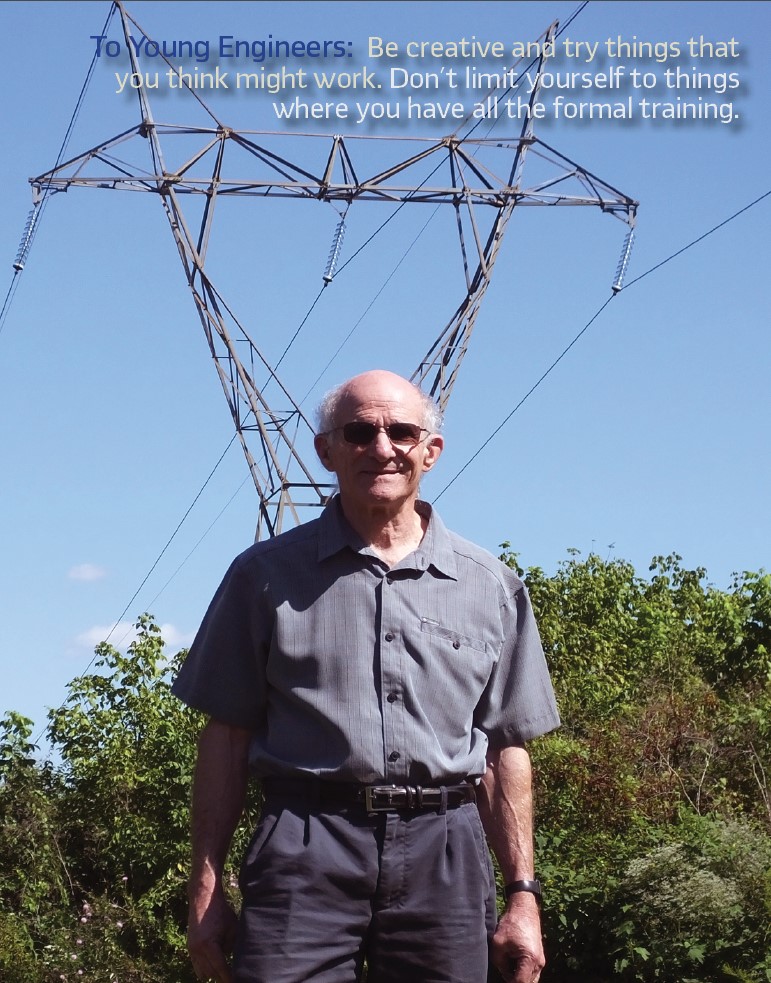
Biography:
Ken Martin a principal engineer with the Electric Power Group (EPG). He has over 45 years’ experience in the electric utility industry, first at the Bonneville Power Administration (BPA) in communication, precise timing, instrumentation, and testing. He started working with synchrophasor measurement with the first PMUs in 1987 and conducted the first PMU lab tests. He developed the phasor measurement system at BPA including building the first phasor data concentrator and supported similar developments at many utilities. Mr. Martin chaired the development of the IEEE C37.118 Synchrophasor standard series from the 2005 original, through the 2014 amendment. He was a lead for developing the IEC 61850, TR 90-5, and is the convener for the WG that developed the joint IEC-IEEE 60255-118-1 synchrophasor measurement standard. He also chairs WG P10 that is developing a new synchrophasor communication standard, IEEE P2664. Mr. Martin is a Fellow of the IEEE and a registered Professional Engineer. He has authored or co-authored more than 90 technical papers and articles. He received the IEEE Standards Medallion Award in 2014, the IEC 1906 Award in 2017, the IEEE-PES Charles Concordia Award in 2020 and the IEEE Charles Steinmetz Award in 2022.



